
What are lipid-based nanoparticles?
432 vues
Read more
This research summary reveals that dialysis for lipid nanoparticles, a purification step often underestimated, critically shapes microfluidic LNP synthesis. Using a Design of Experiments framework, it demonstrates how dialysis strongly influences nanoparticle size, zeta potential, and polydispersity, often more than flow parameters, and should be integrated early in development.
This research summary aims at describing the influence of the critical process parameters on the main characteristics of LNPs when synthesized by microfluidics, with a specific focus on the influence of dialysis for lipid nanoparticles.
The peer reviewed article “Dialysis is a key factor modulating interactions between critical process parameters during the microfluidic preparation of lipid nanoparticles” was originally published in Colloid and Interface Science Communications in April 2023 by Ronny Vargas et al.
Microfluidics has recently been widely used for the synthesis of lipid nanoparticles thanks to its unique ability to cause rapid and homogeneous nanoparticle self-assembly, leading to excellent size control and uniformity, and high encapsulation efficiency. As this method is based on rapid microfluidic mixing, research articles generally only focus on the mixing conditions (TFR, FRR) impact on the nanoparticle properties but tend to overlook other external factors such as chip characteristics, N/P ratio or dialysis (or more generally purification process).
In this study, the authors present the impact of the dialysis on the nanoparticle parameters, as well as its possible interaction with TFR and FRR using a design of experiment approach and quantify the influence of each variable.
Aims:
The LNPs were prepared using microfluidic ethanol injection method. LNP were composed of a mix of DOTAP (cationic lipid), DSPC, Cholesterol and DSPE-mPEG2000 at a molar ratio of 40: 10 : 48,5 : 1.5, dissolved into ethanol at a 2,5 mM concentration. The aqueous phase consisted of citrate buffer at 1mM.
The microfluidic setup was made of a staggered Herringbone mixer (Fluidic 187, Microfluidic Chipshop) for the mixing of the 2 solutions and a high accuracy flow control system (Inside Therapeutics) for the precise control of the environment parameters.
To study the influence of the mixing conditions parameters, TFR in the range of 0,4 to 4 mL/min were tested, with FRR between 3 and 9, and characterized using DLS systems.
As introduced above, 3 main nanoparticles characteristics were studied: particle size, Zeta potential and polydispersity index.
As introduced in the figure below, dialysis caused a large reduction in the average size of the nanoparticles – and this for nearly all synthesis conditions. Regarding synthesis variables, and consistently with already published papers and our review on the fundamentals of nanoparticle synthesis, nanoparticle size tends to decrease at higher TFR in a herringbone mixer – this both with and without dialysis.
However, one key finding is that, while before dialysis the FRR has a major influence on the final nanoparticle size, its impact is greatly reduced post dialysis.
Finally, it also appears that dialysis also helps with process repeatability, with better batch to batch repeatability after than before dialysis.
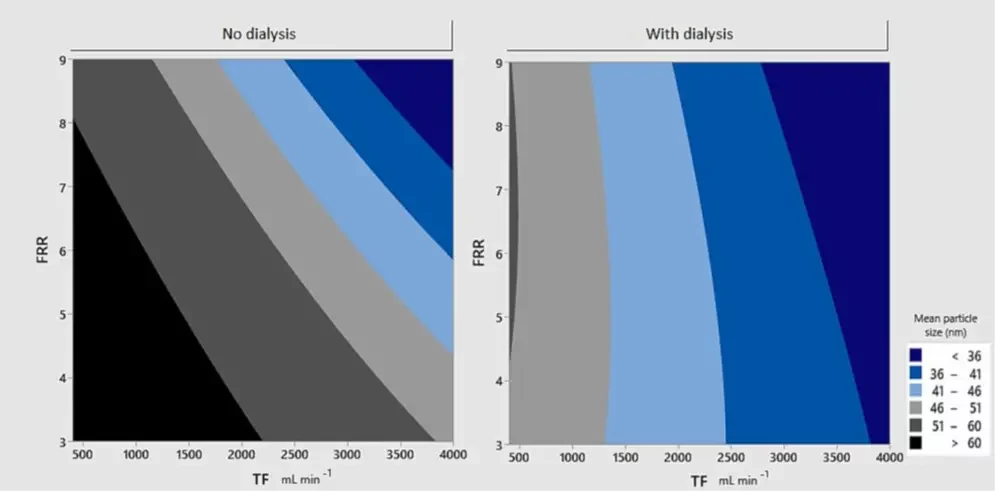
The study shows that Zeta potential could be the nanoparticle parameter that is most impacted by dialysis.
Indeed, while TFR shows an impact on the Zeta potential value, it can be nearly neglected as its significance is one order of magnitude smaller than this of dialysis.
FRR instead is a major example of parameters interaction. While it has an impact on Zeta potential values both before and after dialysis, its effect is opposite: an increase in FRR lead to an increase in Zeta potential before dialysis, but to a decrease of Zeta potential after Dialysis.
PDI appears to be the parameter least affected by dialysis.
In the case of PDI, the traditional approach only considering TFR and FRR might provide the best fit for describing the behavior of PDI, and more precisely because smaller particle size tends to lead to an increase in PDI.

Same formulation and similar experimental procedures (except from dialysis) could lead to completely different LNPs systems.
The very different effect of FRR before and after dialysis for size and zeta potential shows that dialysis should be a necessary step after synthesis in screening stages, as the knowledge gathered from its characterization before dialysis becomes insignificant after. More generally, because of parameters interaction, the largest number of synthesis parameters should be considered for preliminary studies to ensure best reproducibility all throughout development stage.
The below chart summarizes the impact of the different synthesis parameters on the final nanoparticle characteristics:

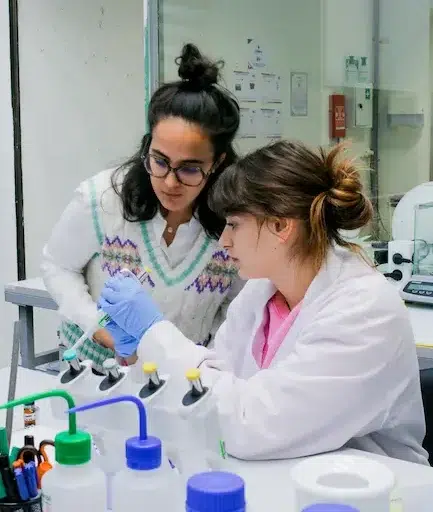
Reach out to us to learn how we can help!
Ronny Vargas, Miquel Romero, Tomás Berasategui, David A. Narváez-Narváez, Patricia Ramirez, Anna Nardi-Ricart, Encarna García-Montoya, Pilar Pérez-Lozano, Josep Mª Suñe-Negre, Cristina Moreno-Castro, Cristina Hernández-Munain, Carlos Suñe, Marc Suñe-Pou,
Dialysis is a key factor modulating interactions between critical process parameters during the microfluidic preparation of lipid nanoparticles,
Colloid and Interface Science Communications, Volume 54, 2023, 100709,
https://doi.org/10.1016/j.colcom.2023.100709
Looking to learn more about nanoparticles? Do you need inspiration or a different angle to take on your specific problem? Well, we probably have a Review just for you, feel free to check them out!
See all Nano Reviews
432 vues
Read more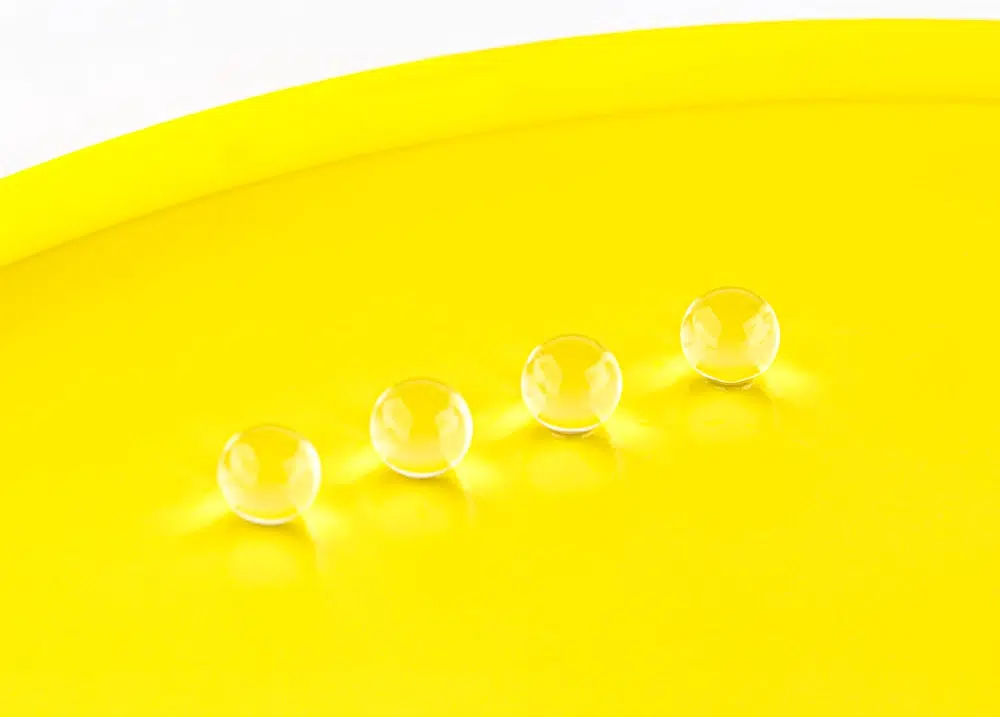
187 vues
Read more
208 vues
Read more
416 vues
Read more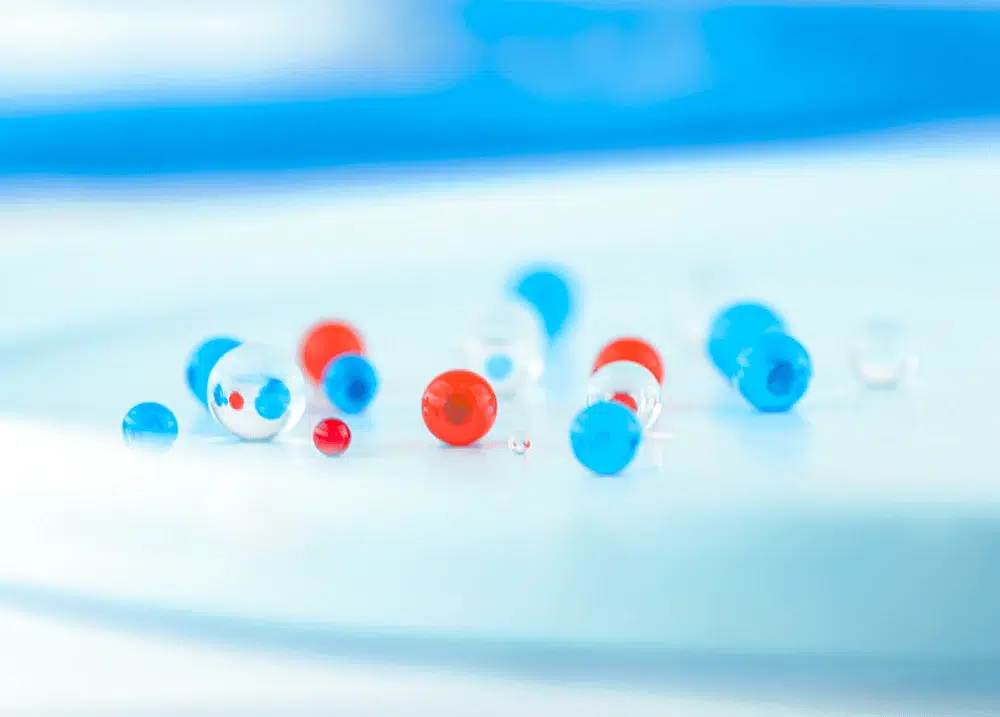
141 vues
Read more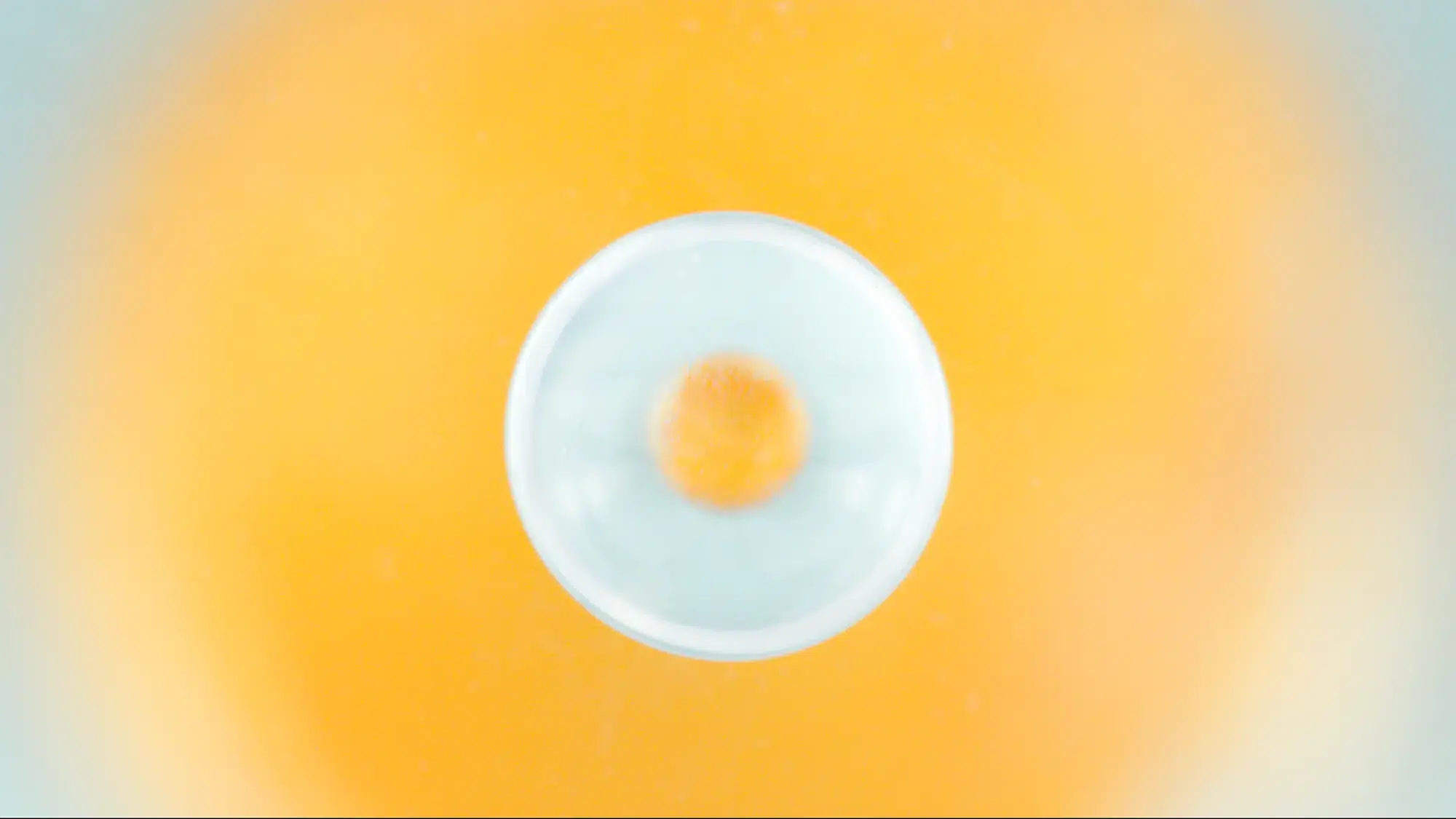
394 vues
Read more